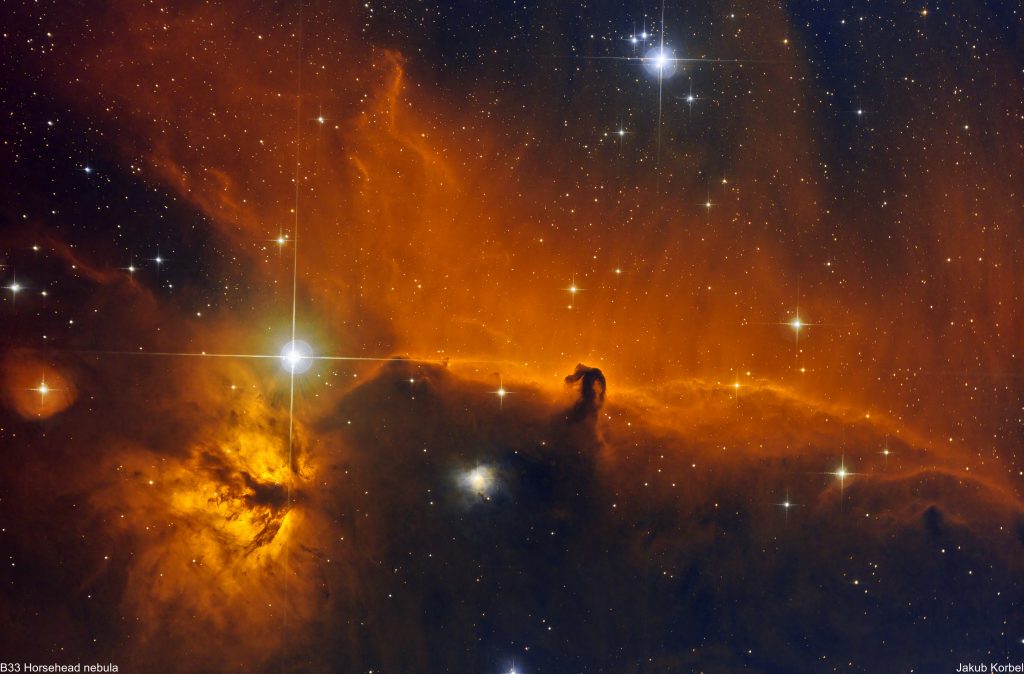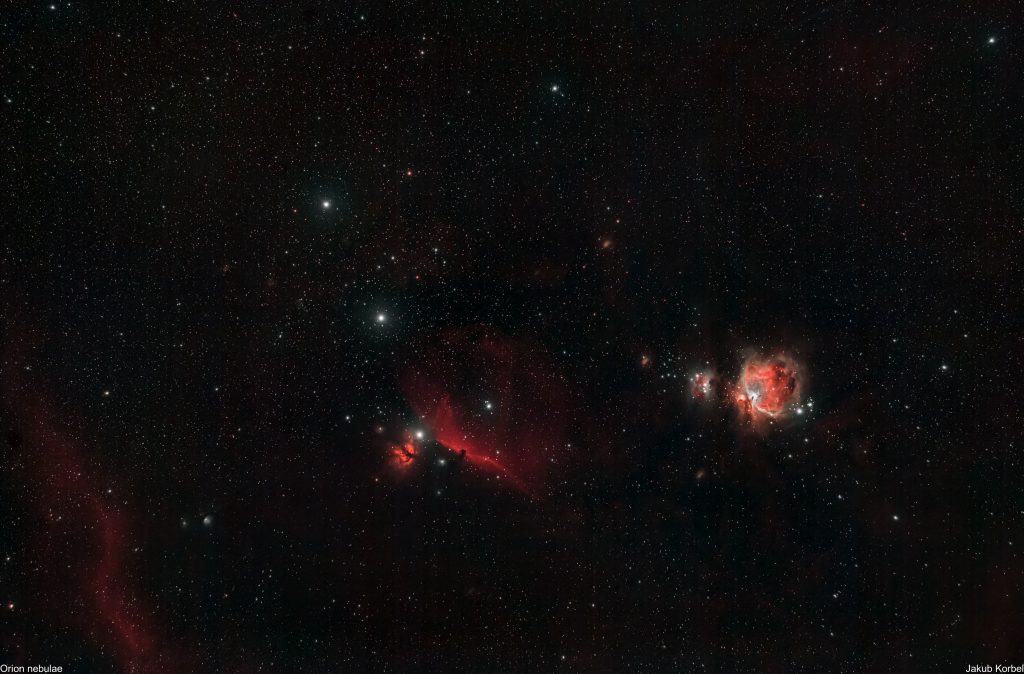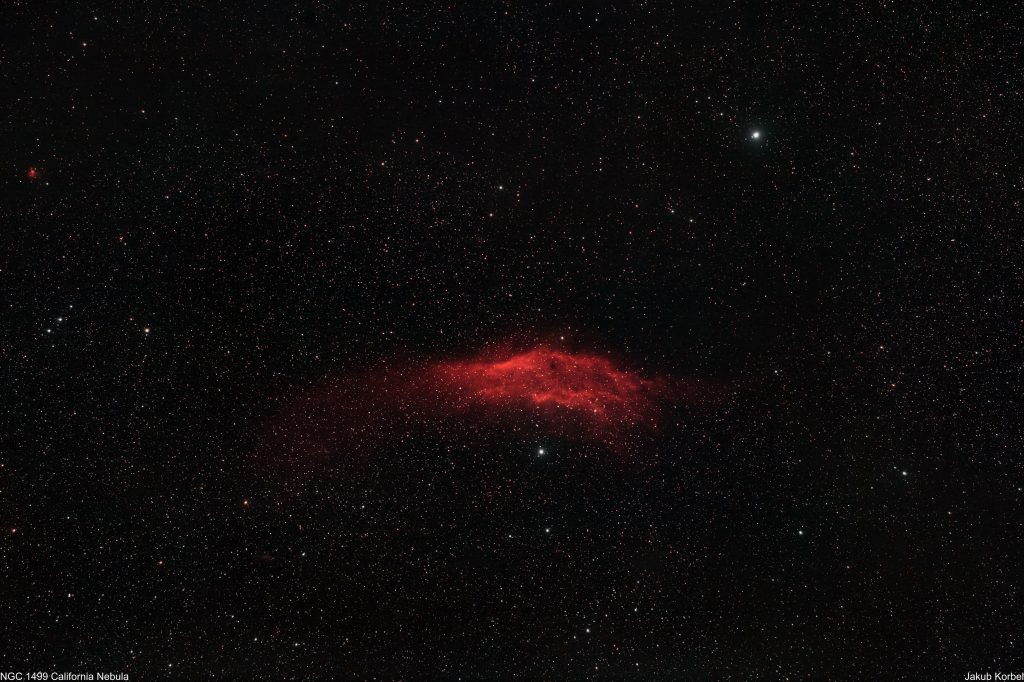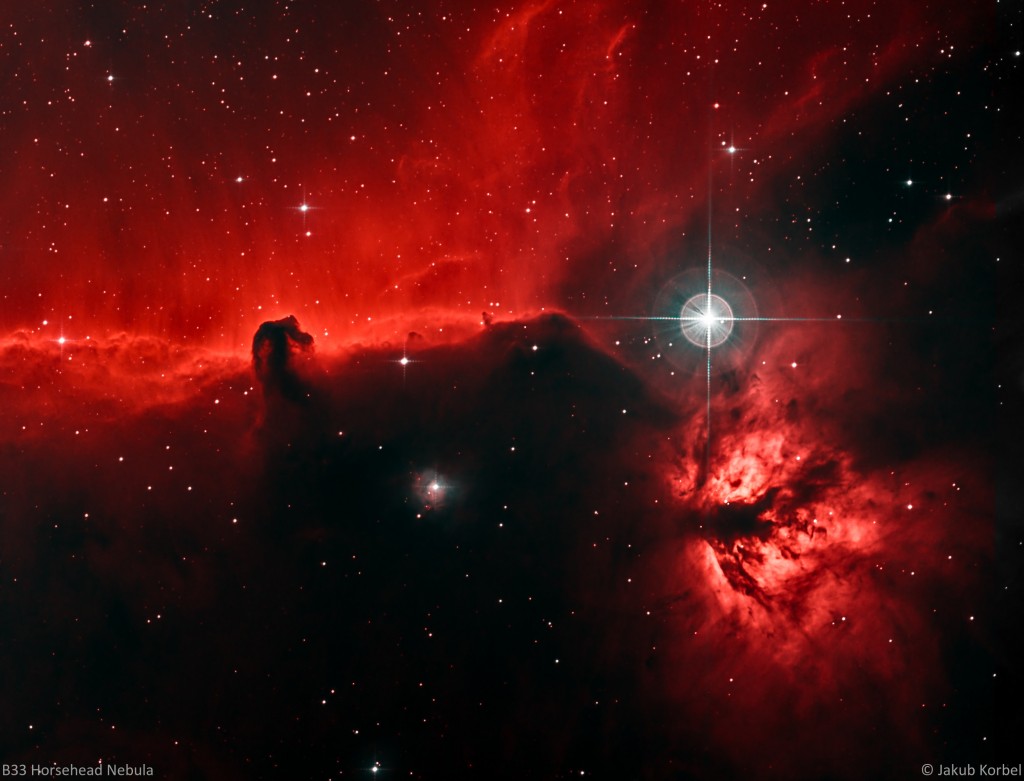Horsehead nebula is IMHO the most beautiful deep space object. It is located in the constellation Orion. Everybody knows this constellation because it can be easily identified by three aligned stars (Alnitak, Alnilam, and Mintaka), which forms the belt of the Orion.
The nebula is very dim. Therefore, visual observation is nearly impossible, unless you have a telescope, having at least 1 meter in diameter. To photograph it, one needs a very long exposure time. I used 5 minutes per image and I took 36 of them. The nebula complex is visually very large, so the optimal focal length should be shorter than 750 mm. I used a Newtonian telescope with a focal length of 1000 mm but reduced to 750 mm by the Nexus coma corrector. It turns the Newtonian into a light-collecting bucket, but the quality suffers from that. The stars in the corners are everything, but round. Moreover, I used dual-band filter Optolong L-eXtreme, which increased the contrast of the nebula, but also made the asymmetric halo around the bright stars. I played a bit with the white balance and pushed the colors into the orange tint, to reach the warmer feeling in cold February.

| Telescope | Newton 254/1000 mm |
| Aperture | 254 mm |
| Focal length | 750 mm |
| Mount | Gemini G53f |
| Autoguiding | ZWO 174MM, TS 60/240 mm |
| Camera | ZWO 071 Pro @-10°C |
| Corrector | Nexus coma corrector |
| Filters | Optolong l-eXtreme |
| Exposure | 36x300s, Gain 95, bin 1x1, |
| Date | 2022-02-09 |



